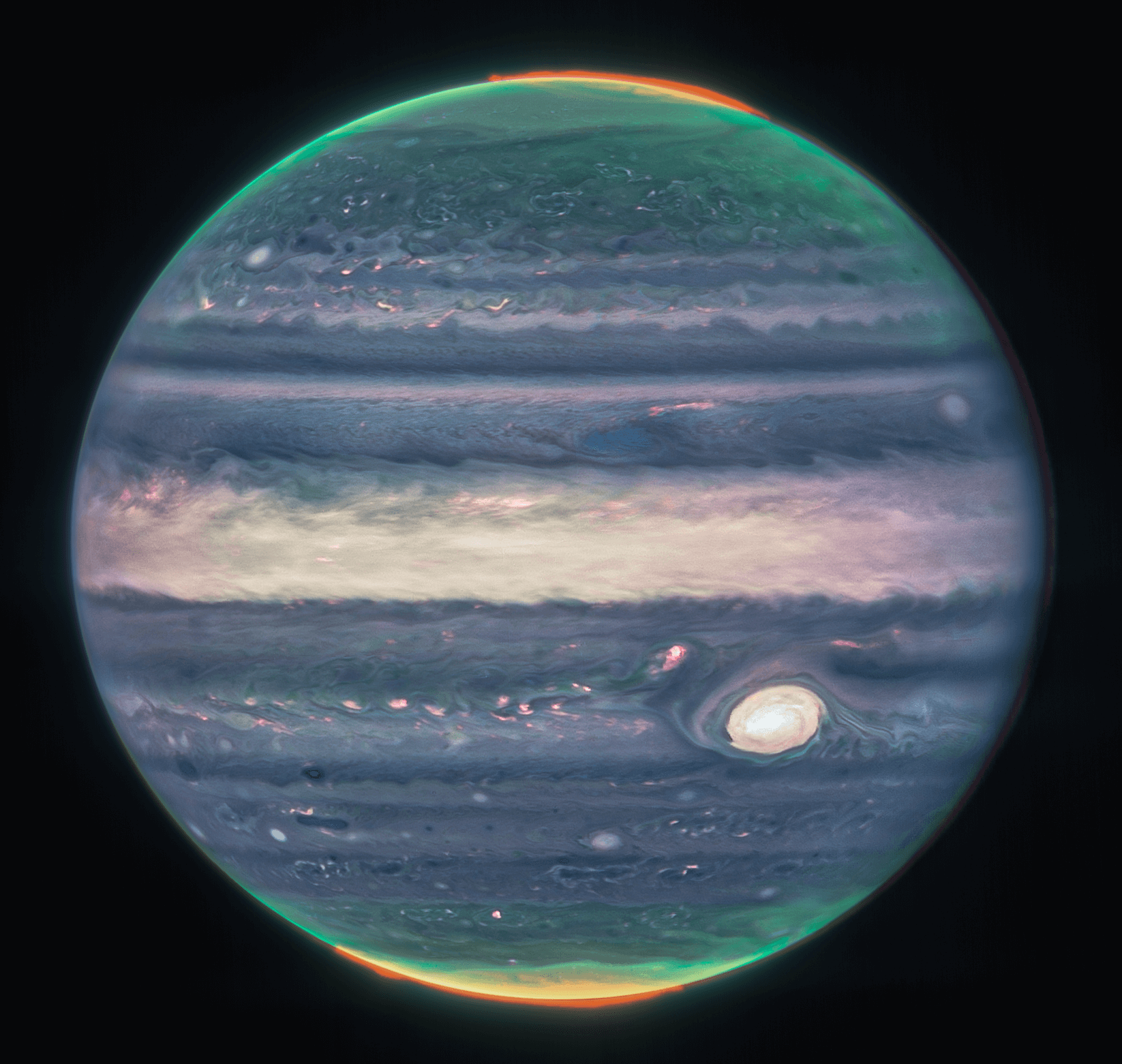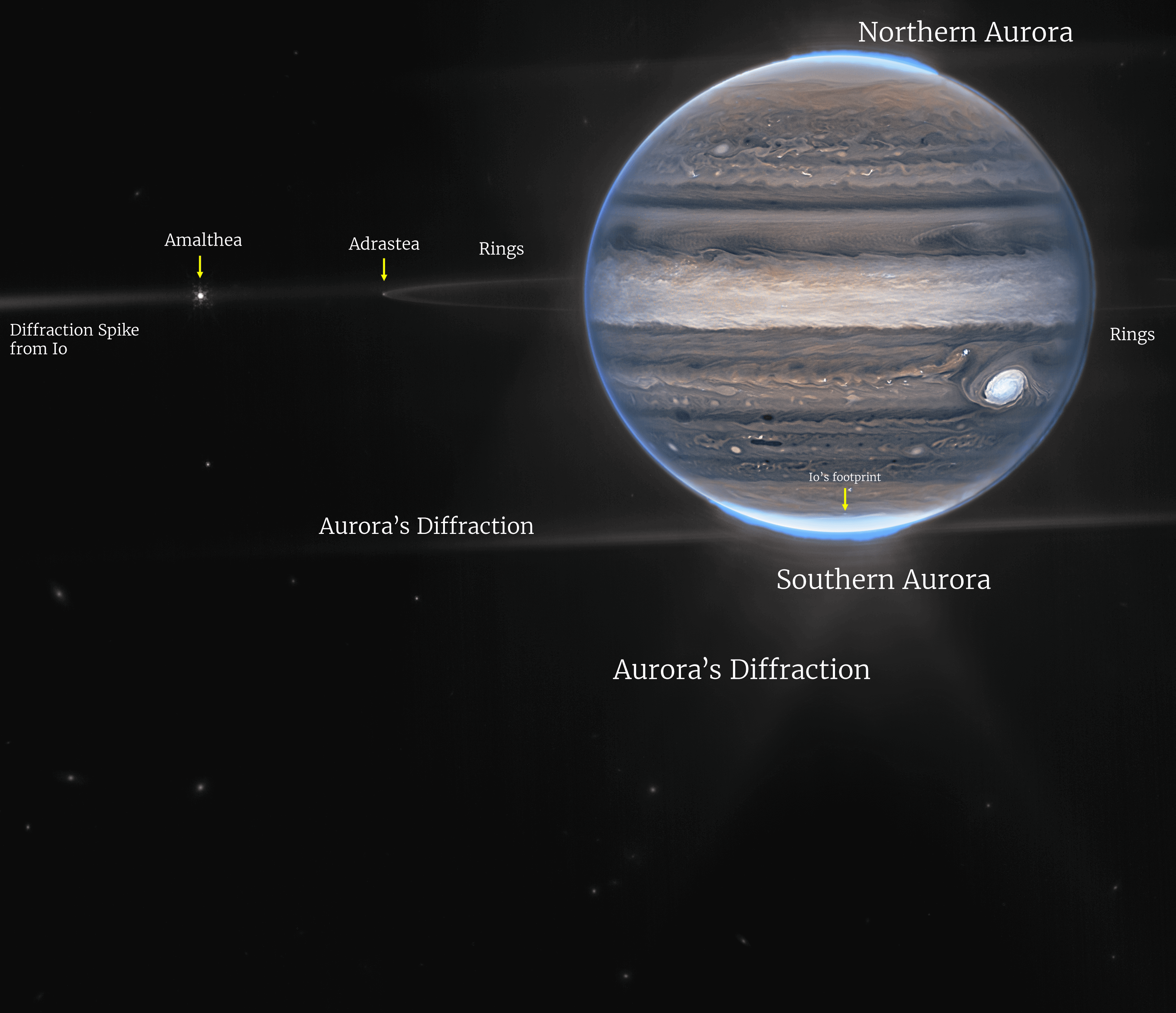Webb Space Telescope scientists relayed images of the planet Jupiter to a citizen scientist who enjoys image processing. She had to overcome Jupiter's rapid rotations and process an infrared image of it that highlights the aurora borealis, the Great Red Spot as well as the pale rings of the largest planet in the solar system

Huge storms, strong winds, massive auroras and extreme temperature and pressure conditions. A lot happens in Jupiter. Now, NASA's James Webb Space Telescope has captured new images of the planet. Webb's observations of Jupiter will give scientists more clues to what's going on in Jupiter's interior.
"We didn't really expect this shot to be this good, to be honest," said planetary astronomer Imka de Pater, professor emerita at the University of California, Berkeley. De Patre led the observations of Jupiter with Thierry Pochet, a professor at the Paris Observatory, as part of an international collaboration for the Webb Early Imaging Publication Program. Webb itself is an international mission led by NASA with its partners ESA (European Space Agency) and CSA (Canadian Space Agency). "It's really amazing that we can see details of Jupiter along with its rings, tiny moons and even galaxies in one image," she said.
Both images were taken using Webb's Near Infrared Camera (NIRCam), which includes three special infrared filters that show details of the planet. Since infrared light is invisible to the human eye, the light is mapped to the visible spectrum. Generally, the longest wavelengths appear redder and the shortest wavelengths appear bluer. Scientists collaborated with amateur scientist Judy Schmidt to translate the web data into images.
Looking at Jupiter itself, created from a collection of several Web images, the aurora extends to high altitudes above Jupiter's north and south poles. The glow is prominent in the filter mapped to redder colors, which also highlights light reflected from lower clouds and upper haze. Another filter, mapped to yellows and greens, shows haze swirling around the north and south poles. A third filter, mapped to blue, shows light reflected from a deeper large cloud.
The Great Red Spot, a famous storm so big it could engulf the Earth, appears white in these views, like other clouds, because they reflect a lot of sunlight.
"The brightness here indicates high altitude -- so the Great Red Spot creates haze at high altitude, as does the equatorial region," said Heidi Hamel, Webb's interdisciplinary scientist for solar system observations and vice president of science at AURA. "The many bright white 'spots' and 'stripes' are apparently very high-altitude cloud tops of condensed convective storms." In contrast, dark films north of the equatorial region have little cloud cover.

In a wide-field view, Webb sees Jupiter with its rings, which are a million times fainter than the planet, and two tiny moons called Amalthea and Adrastea. The blurry spots in the lower background are most likely background galaxies.
"This one image summarizes the science of our Jupiter system program, which studies the dynamics and chemistry of Jupiter itself, its rings and its system of satellites," Fosht said. Researchers have already started analyzing web data to get new scientific findings about the largest planet in our solar system.
Data from telescopes like Webb's doesn't come to Earth neatly packaged. Instead, it contains information about the brightness of the light in the web detectors. This information arrives at the Space Telescope Science Institute (STScI), Webb's mission and science operations center, as raw data. STScI processes the data into calibrated files for scientific analysis and transfers them to the Mikulsky Archive for Space Telescopes for distribution. Scientists translate this information into such images during their research (Here's a podcast about it). While staff at STScI formally process Web images for official distribution, lay astronomers known as "citizen" scientists often dip into the public data archive to retrieve and process images as well.
Judy Schmidt of Modesto California, a veteran image lab in the citizen science community, processed the new images of Jupiter. For the image that includes the tiny satellites, she collaborated with Ricardo Huaso, a co-investigator of these observations, who studies planetary atmospheres at the University of the Basque Country in Spain.
"Citizen" scientist Judy Schmidt of Modesto, California, processes astronomical images from NASA spacecraft, such as the Hubble Space Telescope. An example of her work is Minkowski's butterfly, right, a planetary nebula in the direction of the constellation Ophiuchus.
Schmidt has no formal educational background in astronomy. But 10 years ago, a competition ignited her insatiable passion for image processing. competition "the treasures הhidden of grief” invited the public to find new gems in the Hubble data. Out of nearly 3,000 submissions, Schmidt won third place for a photo of a newborn star.
Since the competition, she has been working on the Hubble analysis and other telescope data as a hobby. "Something about it just stuck with me, and I can't stop," she said. "I could spend hours and hours every day."
Her love of astronomical photography led her to process images of nebulae, spherical clusters, star forming regions and more spectacular cosmic objects. Her guiding philosophy is: "I try to make it look natural, even if it's not something close to what your eye can see." These images caught the attention of professional scientists, including Hamel, who had previously collaborated with Schmidt in refining the Hubble images of the Jupiter impact of Comet Shoemaker-Levy 9.
In fact, Jupiter is more difficult to work with than more distant cosmic objects, says Schmidt, because of how fast it rotates. Combining a stack of images into one view can be challenging when Jupiter's unique features have rotated during the time the images were taken and are no longer aligned. Sometimes she had to make digital adjustments to stack the images in a logical way.
Webb will provide observations of every phase of cosmic history, but if Schmidt had to pick one thing to be excited about, it would be Webb's observations of star-forming regions. In particular, she is fascinated by young stars that produce powerful jets in small patches of nebulae called self-Herbig–Haro. "I'm really looking forward to seeing these weird and wonderful baby stars blasting holes into nebulae," she said.
To the article on the NASA website
More of the topic in Hayadan:
- The Webb Space Telescope Peeps Into Chaos - Captures Stellar Gymnastics in the Wheel Galaxy
- The James Webb Telescope reveals in detail the steamy atmosphere of a distant planet
- NASA's Webb Telescope reveals cosmic cliffs and star-forming regions in the Carina Nebula
- How do we know that humanity established the first intelligent civilization on Earth?

One response
Justice must be done, not seen...